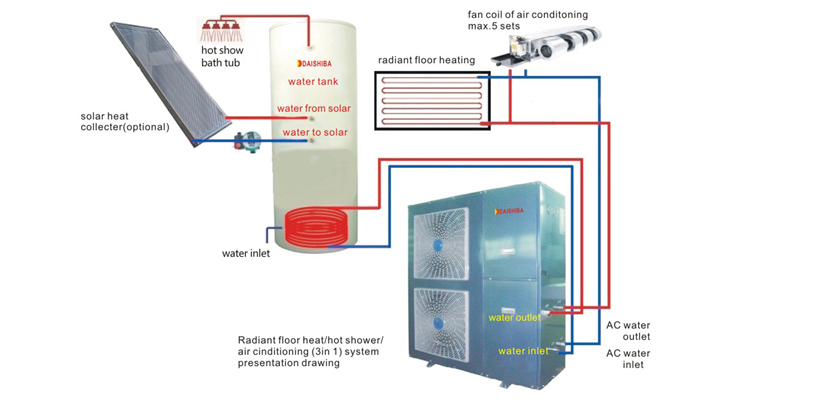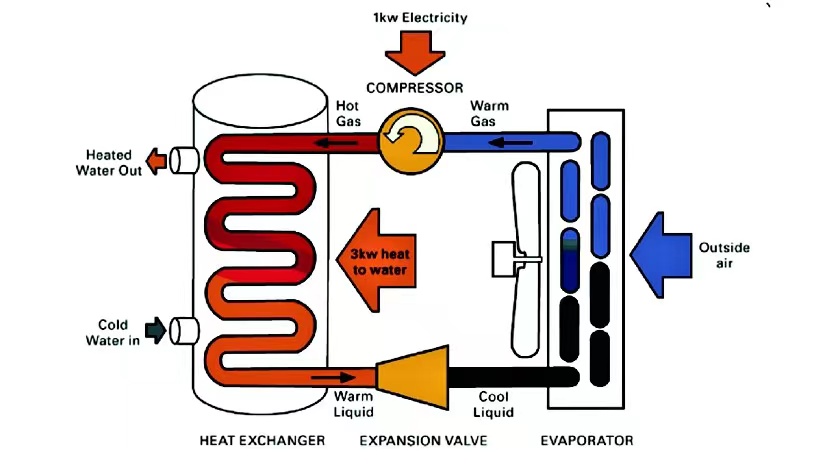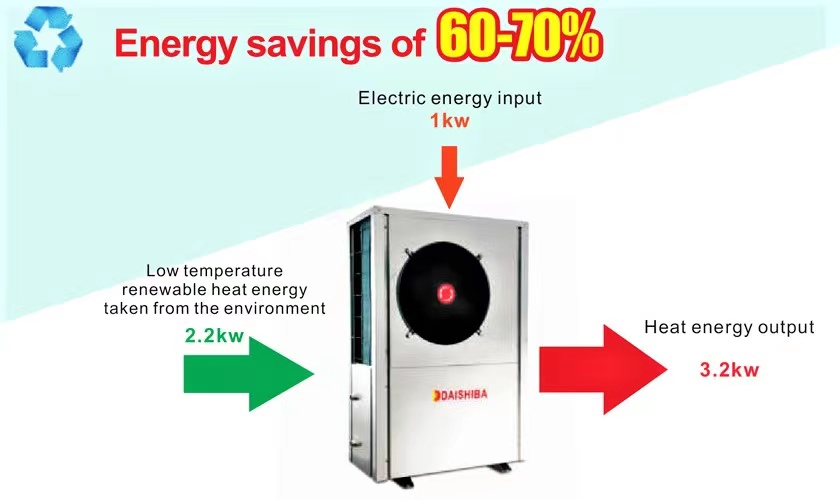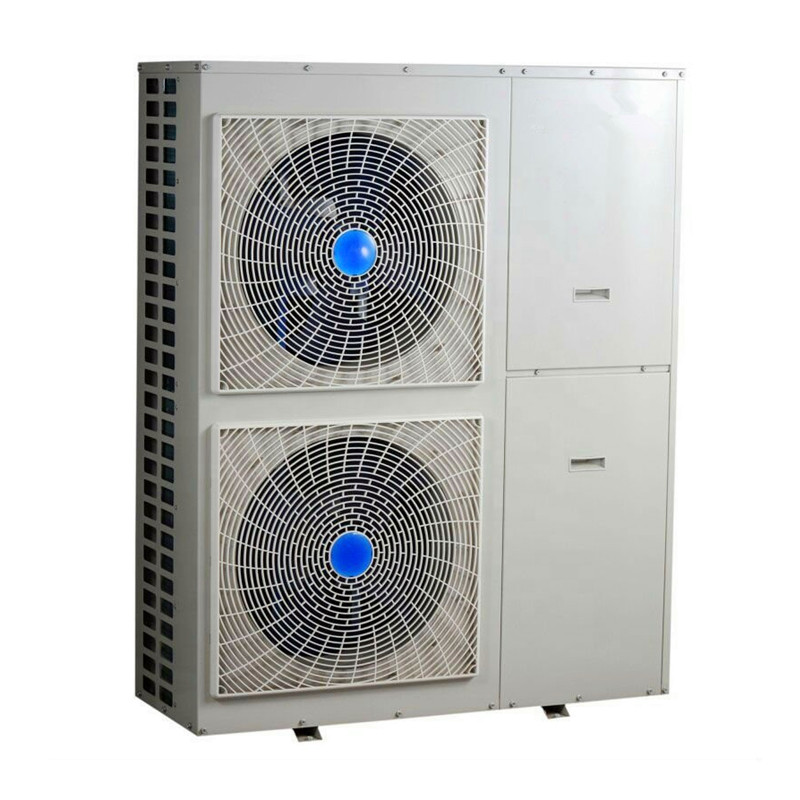
Product Description:
DASHIBA Multifunctional Monobloc Air Source Heat Pump provides energy-efficient room heating,cooling and domestic hot water for residential and small commercial application.Using free renewable energy from the air the units are highly efficient with low running costs,low carbon emission and are able to be integrated with enery systems such as solar heater and boiler.
Total solution for home and commercial use:
1) Producing domestic hot water all year round
2) Making room heating in winter
3) Making room cooling in summer
Flexible configuration:
DAISHIBA Air Source Heat Pumps can be installed in both new and renewal applications. If you already have the heating system there is no need to change it. Daishiba heat pump could be compatible with:
1) Floor heating and cooling
2) Fan-coils
3) Mixed installation for floor heating and fan-coils
4) Standard low temperature radiators
5) Thermal solar energy.

|
|
|||||||||||||||||||||||||||||||||||||||||||||||||||||||||||||||||||||||||||||||||||||||||||||||||||||||||||||||||||||||||||||||||||||||||||||||||||||||||||||||||||||||||||||||||||||||||||||||||
How Does a Heat Pump Work?
Heat pumps use electrical energy and take low grade heat energy from the outdoor air to heat refrigerant which in turn heats water for domestic use and space heating. The efficiency of a heat pump is known as the coefficient of performance or COP. This is a ration of the heat delivered to power consumed.

1. The refrigerant passes into the evaporator and heat energy from the outside air passes over the evaporator causing the refrigerant to increase in pressure and change to warm vapor.
2. This warm vapor then enters the compressor where its temperature increase as a result of the compression process and turns into a hot gas.
3. The hot refrigerant gas is then condensed as it passes across one side of a plate heat exchanger, and this is transferred via the primary water circuit to heat up the water tank.
4. Despite dropping in temperature, the cool vapor still has a high pressure and to reduce this pressure the vapor passes through an expansion valve. This cause the pressure to drop and the temperature lowers, returning the refrigerant to its initial state of cool low pressure liquid.
This process is repeated.
It is only the refrigerant that passes through this cycle; the water is heated as it travels through the plate heat exchanger. The heat energy from the refrigerant passes through the plate heat exchanger to the cooler water which increase in temperature. This heated water enters the home heating circuit and also be used to provide domestic hot water via a hot water tank.





